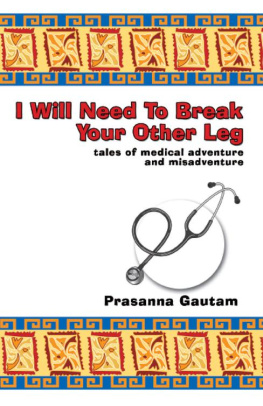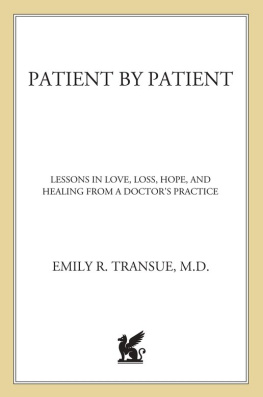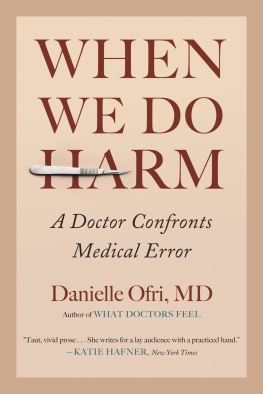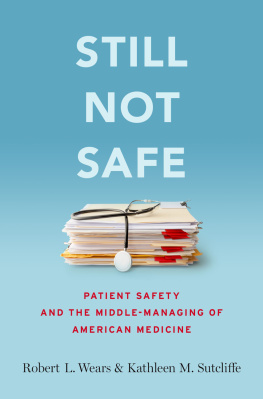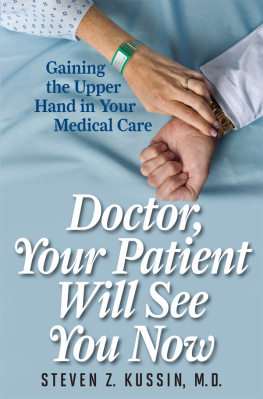First published in 2008 by Hammersmith Press Limited,
First published as a digital book in 2013 by Hammersmith Health Books an imprint of Hammersmith Books Limited
www.hammersmithbooks.co.uk
Prasanna Gautam 2008
The Author asserts the moral right to be identified as the author of this work.
All rights reserved. This publication may not be reproduced, stored in a retrieval system, or transmitted in any form or by any means, electronic, mechanical, photocopying, recording, or otherwise, without prior permission of the publishers.
Authors note: Where I have included case histories, descriptions of patients, or dialogue, usually recreated from memory after many years or even decades, I have taken considerable care in each case to protect the identity of the people involved. I have changed a variety of medical, personal, historical and other identifying details, including sometimes the time, place and circumstances of the encounter in some cases blending similar stories together. Despite this occasional but very necessary fictionalisation to protect identity, every single one of the stories is based originally on real people and on real events. I am very grateful to the people concerned, and I hope that I have described them with the respect and compassion that they deserve. I am also confident that anyone who thinks they recognise themselves in the narrative will be mistaken, for I have deliberately created characters that are in some ways archetypal.
British Library Cataloguing in Publication Data:
A CIP record of this book is available from the British Library.
ISBN 9781781610541
Designed by Amina Dudhia
Typeset by Phoenix Photosetting
Production by Helen Whitehorn, Pathmedia
Printed and bound by TJ International Ltd, Padstow, Cornwall, UK
Nandan and Meena, who always seemed fascinated by the stories in medicine, encouraged me to write an autobiography including these tales. I did not think that the story of my life would be more interesting than paying tribute to my patients in this manner. I must therefore thank both my children and my patients.
I must acknowledge with profound gratitude my mentors who made me the kind of doctor that I eventually became. There are many but I would like to say special thanks to the late John Edge, and also to Malcolm Palmer, Norman Coulshed, Alex Harley, Michael Lye and Ray Tallis. And finally, to Georgina Bentliff of Hammersmith Press who found my work sufficiently interesting to publish.
I have never kept a diary but have a good memory and rarely forget important information or events. When I set out to write this book, I jotted down about one hundred incidents, making a long list. This brought back many painful as well as profoundly sublime moments, including numerous memorable patients who had helped to shape my destiny. At the beginning, the working title of the book was simply On being a doctor. During the course of writing it became apparent that I was talking about both my own feelings and experiences and those of my patients and about how these interacted. So the working title became It works both ways. Finally, the book has resolved itself into an anthology of unique medical adventures, and misadventures; the final title is based on a chapter with more than its fair share of misadventures , as you will see. Of the original long list, I have selected only twenty-five stories that to me stand out as seminal moments in my development as a doctor and as a person.
Each story stands alone so you can start reading from any chapter, though the incidents are largely in chronological order. I have described the relevant social, political, religious and professional background to each because I have learnt that no medical problem can be properly understood or treated without reference to its wider context. Holistic medicine means considering a patients total life circumstances as part of the problem, and the solution.
It has been essential to maintain the anonymity of my patients. Hence all personal details in the book, apart from those of my family, have been changed, as have many place names and chronological aspects. However, the central facts are true and the messages I have taken from them unequivocal. It is the nutrients in the meal and not the seasoning that impart nourishment. In these times of constant change in health care provision and medical education, my aim is, through the essence of these stories, to stimulate all those involved in patient care to think laterally and do nothing by rote but always to put the interests of the patient first. At worst, the book will be seen as an amusing collection of bizarre events. The reader will have to decide.
Two common themes run through these narratives: the need for the doctor to think for him/herself on the basis of sound knowledge and careful observation; and the importance of the doctor-patient relationship as something that involves give and take on both sides.
It is the responsibility of a doctor to do the best for a patient in spite of any adverse circumstance that may be prevailing at the time. A doctor must improvise at times, show ingenuity at all times, stand up to any adverse influences, be prepared to take risks and do whatever is possible for the benefit of the patient. He, or she, must follow these principles even in the most unlikely situations because they are fundamental to the special relationship between doctor and patient. These principles are being challenged today by the drive towards super-specialisation and cure rather than healing and succour.
There is a lot more to the doctor-patient relationship than is generally acknowledged. This is a special bond, which must be kept relatively weak in the interests of objectivity. Nevertheless, it is the catalyst for creativity in medicine for making medicine an art as well as a science. This is manifest when a doctor not only treats a specific disease but also cares for a patient as a whole human being. Little acknowledged, but experienced by all doctors, is the influence that patients have on their doctors, sometimes subtly, and sometimes overtly. I have been profoundly influenced by my patients throughout my career.
I believe that the science of medicine is the essential foundation, or broad canvas, upon which the art of medicine can be created. Each encounter with a patient then becomes a unique work, which cannot be replicated but from which much can be learned for the future. This is the beauty and the challenge of medicine.
Prasanna Gautam
Aberdeen, 2008

